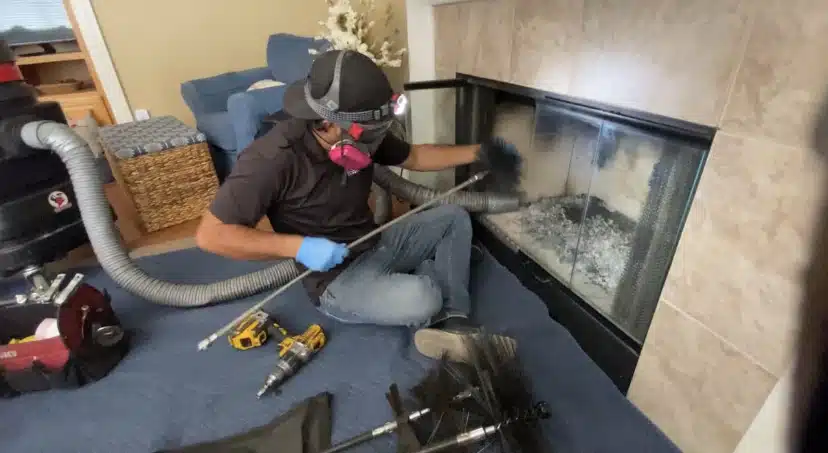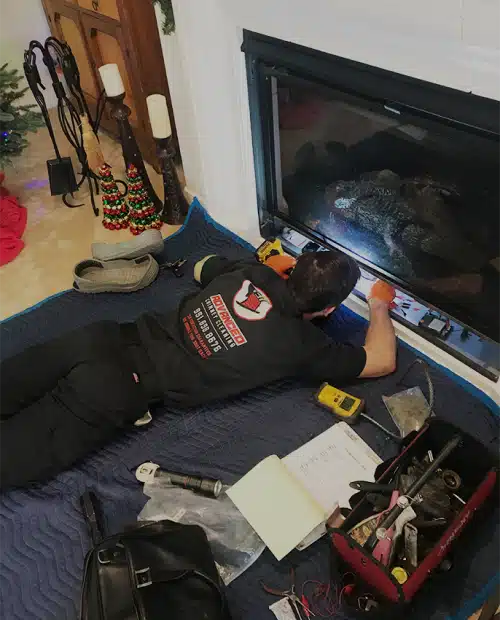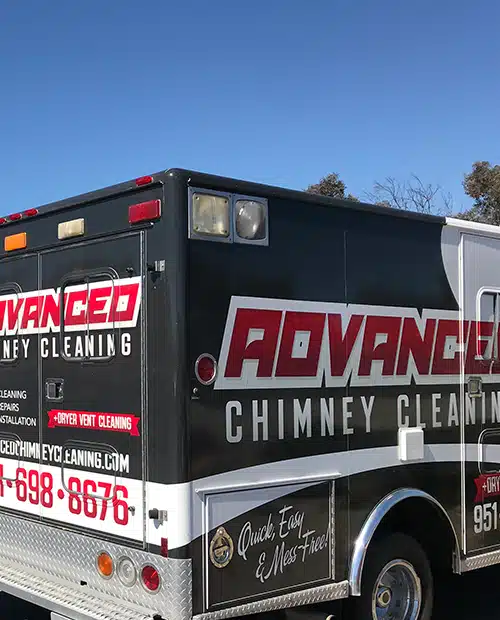
Chimney Sweeping
As the area’s only licensed and certified chimney service company, Advanced Chimney Cleaning has been providing a quality chimney sweep in Murrieta and Temecula Valley for over 20 years. We are your local chimney sweep company!
Chimney sweeping has come a long way from the Dark Ages. We have decided to leave the ways of the past, well, in the past. You may be used to chimney sweeps shining a flashlight up the chimney, pushing a brush, and removing the soot. Sure, a thorough cleaning was *probably* done, but what about the fireplace and chimney’s ACTUAL condition? You can rest easy knowing when you book with Advanced Chimney Cleaning, not only are you getting a quality cleaning, but you are also getting a full inspection of the entire system.
What does that mean? We inspect everything, from the rooftop to the foundation, inside and out. If the chimney passes through the attic or has crawl space access, we go there too.
Our philosophy is “What good is a clean chimney if you don’t have all the facts?”
Chimney Cleaning Services
Chimney sweeping typically takes 1.5 hours to two hours, and includes a thorough inspection of your chimney and fireplace. During the visit, our chimney technicians will remove byproducts of combustion like creosote using specialized brushes and power cleaning tools, as well as industrial vacuums to control airborne dust. A complete Level Two Inspection is performed every time. No other chimney sweep company in Temecula or Murrieta offers this level of inspection on every job they take on.


Chimney sweeping will not leave a mess in your home!
What is Creosote?
Creosote is the byproduct of incomplete combustion of fossil fuels, including coal, oil and wood. When creosote builds up to 1/8" to ¼" thick, it can ignite and start a fire in your chimney. This can cause extensive damage to the chimney as well as your home. With an updraft, igniting creosote can sound like a train in your living room, but it may sound like howling wind outside if it ignites on just one side of the flue. Regardless, it can cause extensive damage. If you have creosote it’s important to give us a call so we may remove it.
Is Chimney Cleaning Necessary for a Smoking Fireplace?
There are several causes of a smoking fireplace. Your chimney requires proper capacity and draft to allow smoke up and out of the flue. Even if a fire is burning, a chimney that is operating too cold may have a low draft that is not sufficient to exhaust gases. A smoking fireplace may be caused by creosote build-up or debris in the flue, as well as a flue that is not sized properly. Our technicians will inspect your chimney to determine if soot build-up is the cause and perform an expert sweep to fix the problem.
How Often to Have Your Chimney Cleaned
The National Fire Protection Association Standard recommends inspecting fireplaces, chimneys and vents at least once a year and performs cleaning and repairs when necessary. Even if you do not use your chimney very often, animals made build nests or there may be deterioration that can make the chimney unsafe. Open masonry fireplaces should be swept when there is 1/8" of build-up, or sooner if there is any glaze. Pre-fab fireplaces should be swept when there is a noticeable amount of build-up.






